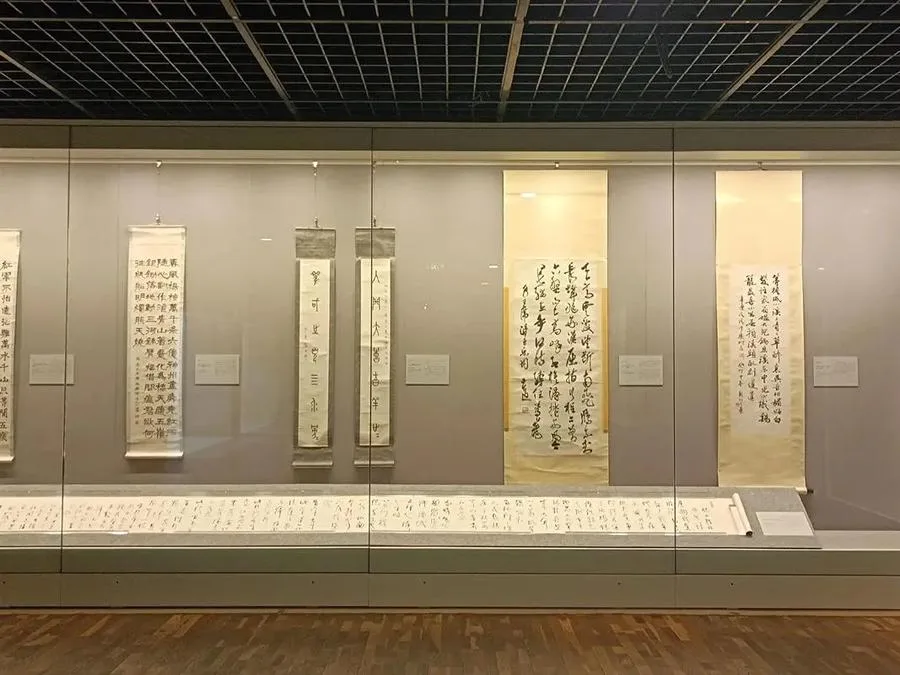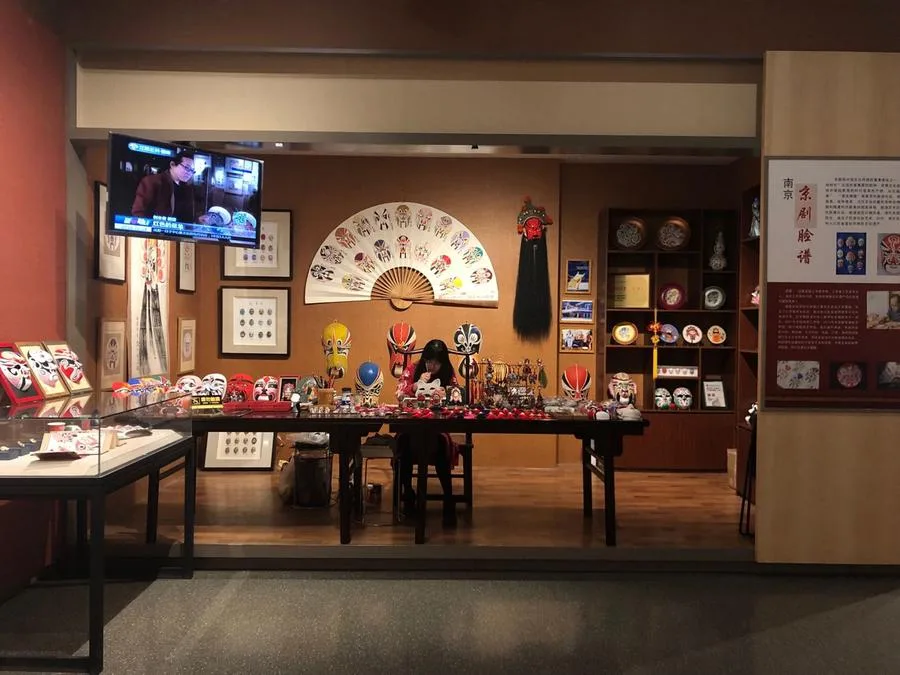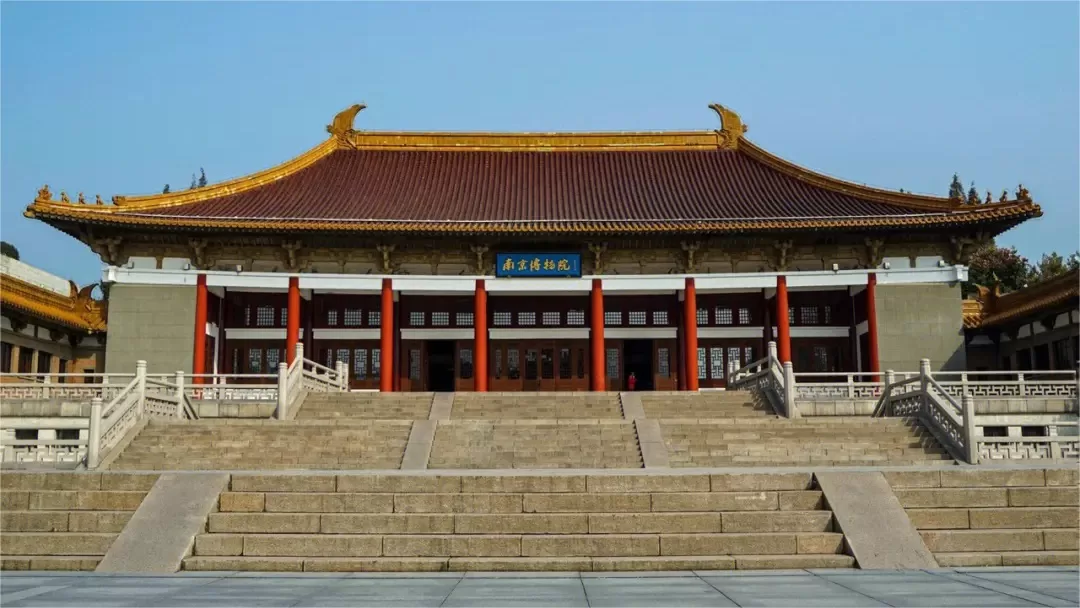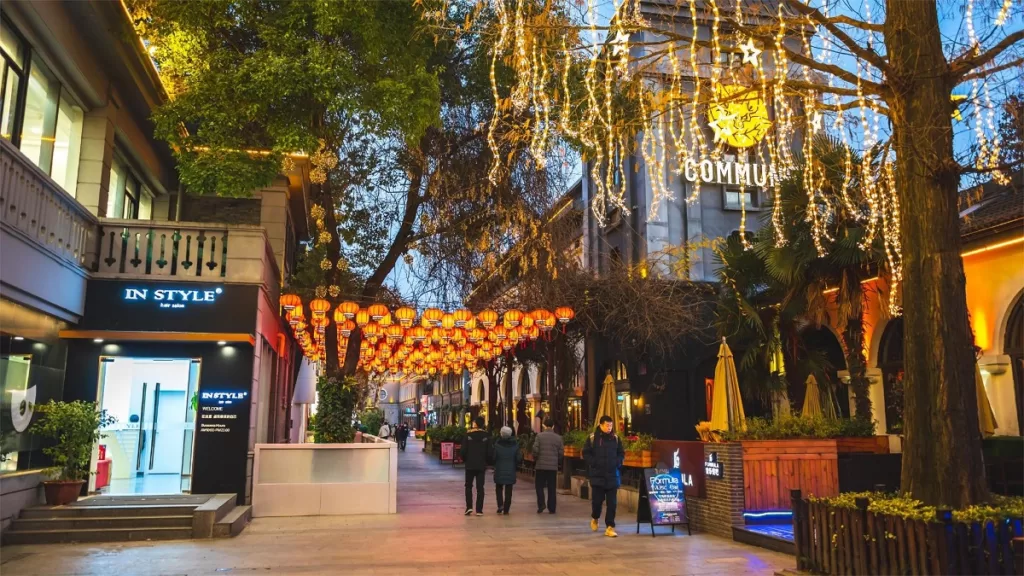Nanjing Museum (南京博物院), one of China’s three major museums, has a rich history and a remarkable collection of artifacts that showcase the country’s ancient heritage. It traces its origins back to 1933 when it was founded by prominent figures like Cai Yuanpei as the National Central Museum. It is not only one of the earliest museums in China but also the first large comprehensive museum funded by the state. Today, Nanjing Museum stands as a large and comprehensive national-level museum and was among the first batch of museums to receive the highest national ranking.
Covering an expansive area of over 130,000 square meters, Nanjing Museum is organized into six galleries, consisting of the History Gallery, Special Exhibition Gallery, Digital Gallery, Art Gallery, Intangible Cultural Heritage Gallery, and the Republic of China Gallery. Its extensive collection houses 432,768 sets of various artifacts, with an astonishing 371,032 sets of precious cultural relics, ranking second only to the Palace Museum in Beijing. These artifacts span from the Paleolithic era to contemporary times, encompassing both national and regional pieces, palace treasures, archaeological discoveries, as well as items collected and donated from the society. Each item is a masterpiece that has drawn the attention of scholars both domestically and internationally.
Table of Contents
- Basic Information
- Location and Transportation
- Highlights of Nanjing Museum
- Vlog about Nanjing Museum
- Useful Tips Summarized from Reviews
- Attractions Near Nanjing Museum
Basic Information
| Website | https://www.njmuseum.com/ |
| Estimated Length of Tour | Over 3 hours |
| Ticket Price | Free |
| Opening Hours | 9.00 -17.00; Last admission: 16.00 Closed on Mondays |
| Telephone Number | 0086-025-84807923 |
Location and Transportation
The Nanjing Museum is located at 321 Zhongshan East Road, Xuanwu District, Nanjing, Jiangsu Province, China. It is situated in the southern part of Nanjing, next to the scenic area of Zhongshan Mountain. To get there, you can choose the following ways:
Bus: Take bus 5, 34, 36, 55, or 59, get off at Zhongshan Gate Stop (中山门站), and you will be standing right at the entrance to the museum.
Metro: The nearest metro station to Nanjing Museum is Ming Gugong (明故宫) on line 2. After getting out of the station from Exit 1, walk about 400 meters to reach the museum.
Highlights of Nanjing Museum
Architectural Marvel

The architectural design of Nanjing Museum aims to reflect the early Chinese architectural style while promoting the traditional culture of the Chinese nation. It distinguishes itself from the other ancient-style buildings on Zhongshan East Road by adopting a Liao Style. Liao-style architecture, which originated in the 10th to 12th centuries in northern China, combines traditional elements from the Tang Dynasty with innovations. It is known for its simple and robust design, gently sloping roofs, and gradually increasing pillars on the facade, giving the eaves a gentle upward curve and reducing the weight of the large roof.
History Gallery

Jiangsu Province, located in the eastern part of China and surrounded by rivers and seas, has a long and illustrious history, often referred to as the “Land of Fish and Rice.” The region, part of the vast Yangtze River basin, contributed significantly to the flourishing ancient Chinese civilization, alongside other great river basins. Jiangsu’s history is marked by economic prosperity, cultural richness, and a distinctive heritage. Through the historical artifacts and specimens in this gallery, visitors can embark on a journey through time to explore the ancient civilization of Jiangsu, gaining a deeper understanding of its traditional culture and artistic charm.
Republic of China Gallery

Situated beneath the Art Gallery on the east side, the Republic of China Gallery is dedicated to showcasing the unique characteristics of the capital city during the Republican era in Nanjing. The gallery presents a condensed representation of urban life during that period by creating a simulated street scene with European-style architecture. Through the use of sound, light, and electricity, visitors can experience the historical atmosphere, offering a nostalgic and retro ambiance. The street features functional shops like a post office, a train station, a barbershop, a traditional Chinese medicine store, a bookstore, and a bank. Dressed in Republic of China-style clothing, the shopkeepers can assist visitors in sending mail, prescribing herbal remedies, selecting books and silver jewelry, and even purchasing local Jiangsu snacks and phonograph replicas.
Art Gallery
Ancient Chinese Painting Exhibition

Jiangsu’s rich tradition of painting boasts outstanding achievements, with numerous artists and schools of painting contributing significantly to the nation’s artistic landscape. The province’s picturesque natural scenery, flourishing commercial economy, profound cultural heritage, and significant political influence have all played integral roles in shaping its distinguished artistic legacy. Over the centuries, Jiangsu has seen the emergence of renowned painting schools such as the Wu School, Songjiang School, Jinling School, Loudong School, Yushan School, Jingjiang School, Yangzhou School, Changzhou School, Coastal School, and New Jinling School. These schools, with their distinctive artistic styles, vividly illustrate the diverse state of painting during the Ming and Qing dynasties, reflecting the evolving trajectory of Chinese painting.
The museum’s exhibition on ancient Chinese painting highlights ten representative painting schools, providing a comprehensive overview of Jiangsu’s painting development since the Ming and Qing periods. Through these selected works, visitors can gain insights into the flourishing artistic scene of Jiangsu and appreciate the diverse artistic expressions that have emerged over the centuries.
Ancient Chinese Calligraphy Exhibition

Chinese calligraphy, often regarded as the quintessence of Chinese civilization, embodies the wisdom and creativity of calligraphers across different epochs. Rooted in the evolution of written scripts, Chinese calligraphy has undergone significant transformations, from oracle bone script and seal script to regular script, cursive script, and running script. It serves as a testament to the profound cultural heritage and spiritual essence of traditional Chinese culture.
The Nanjing Museum’s collection of ancient Chinese calligraphy showcases the rich tradition and heritage of calligraphy, featuring masterpieces from various historical periods. Through the appreciation, study, and inheritance of traditional calligraphy, both calligraphers and enthusiasts have cultivated their spirits, refined their artistic temperament, and enhanced their overall artistic cultivation. The exhibition presents a vibrant panorama of calligraphic artistry, encompassing a diverse range of tools, materials, techniques, and artistic effects. From paper and silk to bronze and bamboo, from brush writing to carving and casting, traditional calligraphy embodies a dazzling array of artistic phenomena, offering visitors an immersive experience into the splendid world of Chinese calligraphy.
Ancient Sculpture Exhibition

The Nanjing Museum boasts a considerable collection of ancient sculptures, with the exhibition aiming to organize and showcase these treasures that illuminate the brilliance of Eastern civilization and wisdom. Visitors to this gallery will encounter a diverse array of sculptures, ranging from artifacts unearthed from archaeological sites such as the Yin Xu in Henan, the Han tombs in Pengshan, Sichuan, and Tang Dynasty sites in Gansu to generational heirlooms. The sculptures on display encompass a wide spectrum, from relics dating back to the ancient Shang Dynasty to artifacts from the Ming and Qing Dynasties. Among them are everyday objects, ceremonial idols, architectural components, and funerary objects, reflecting various aspects of ancient sculptural artistry.
Crafted by mostly anonymous artisans, these sculptures showcase exceptional craftsmanship and profound artistic expressions, offering visitors a glimpse into ancient life and the timeless elegance of classical artistry.
Jiangsu Folk Customs Exhibition

Situated in the heart of China’s eastern coastal region, Jiangsu Province boasts a rich cultural heritage shaped by its geographical diversity, abundant natural resources, and vibrant urban centers. The province’s folk customs reflect the fusion of cultures along the Yangtze River and Huai River, with distinct traditions prevailing in different regions. In southern Jiangsu, the refined and elegant folk customs of the Wu region prevail, while the northern regions are characterized by the robust and dignified customs of the Xu-Huai region. In central Jiangsu, the convergence of the Beijing-Hangzhou Grand Canal and the Yangtze River has given rise to the vibrant customs of Yangzhou, blending the openness of the north with the sophistication of the south.
Along the eastern coast, with over a thousand kilometers of coastline, the maritime culture of Jiangsu’s coastal communities has flourished, with fishermen and salt workers contributing to the region’s unique customs and traditions. Through diligent labor and cultural inheritance, the people of Jiangsu have preserved and enriched their ancient and colorful folk customs, reflecting the timeless charm of traditional culture.
Visitors can immerse themselves in Jiangsu’s folk customs through interactive performances held in the exhibition hall every Saturday and Sunday afternoon, offering a dynamic and engaging exploration of the province’s cultural heritage.
Intangible Cultural Heritage Gallery
Intangible Cultural Heritage Exhibition

The Intangible Cultural Heritage Gallery of Jiangsu Province focuses on showcasing items that have been recognized by the “Representative List of the Intangible Cultural Heritage of Humanity” and the “National List of Intangible Cultural Heritage.” By doing so, it aims to promote the outstanding traditional culture of the Chinese nation. Located at the downstream of the Yangtze River, Jiangsu Province benefits from a rich and diverse cultural environment, blending the simple and solid Qilu style in the north, the mysterious and romantic Jingchu style in the west, and the delicate and gentle Baiyue style in the south. The intangible cultural heritage of Jiangsu reflects the richness and diversity of the region’s cultural heritage, making it a valuable resource and treasure. These intangible cultural heritage elements, covering folk literature, traditional music, traditional dance, traditional drama, folk art, traditional craftsmanship, traditional medicine, traditional sports, recreational activities, and folklore, form the spiritual wealth and emotional foundation of the people, constituting an indispensable part of the spiritual home of the Chinese nation.
Master Workshop

The Master Workshop is a platform that invites renowned national-level inheritors of intangible cultural heritage, both from China and abroad, to demonstrate traditional arts and crafts representative of Jiangsu. Visitors to the workshop have the unique opportunity to witness the charm of master craftsmen up close and even engage in interactive experiences with them. To ensure a dynamic experience for visitors, the workshop regularly rotates its exhibitions, featuring a variety of handicraft projects and master artisans. Detailed information about the current exhibitions is available on the museum’s guide screens.
Folk Tea House

The Folk Tea House, constructed entirely of wood in the style of ancient tea houses, beautifully showcases the traditional architectural craftsmanship of Xiangshan School, an intangible cultural heritage project. Designed to emulate the layout of old tea houses, the Folk Tea House boasts a stunning courtyard adorned with Suzhou-style colorful paintings, a magnificent stage, exquisite wooden carvings, and spacious, well-lit interiors. It serves as an ideal venue for visitors to appreciate performances of Jiangsu’s performing arts intangible heritage and savor the province’s culinary intangible heritage. The Folk Tea House functions as a dynamic cultural space for showcasing intangible cultural heritage, offering regular performances of Jiangsu’s unique folk art forms, including Suzhou Pingtan (a form of storytelling and ballad singing), Nanjing Baiju (a style of traditional Chinese opera), Kunqu Opera excerpts, Jiangnan silk and bamboo music, and more. Adopting the format of traditional tea houses, the Folk Tea House also serves a variety of tea and culinary items listed as intangible cultural heritage, such as Nanjing Yuhua tea, Suzhou Dongting Biluochun tea, and Lianyungang Yunwu tea. Performances are scheduled daily from 14:30 to 15:30, with specific programs listed on the museum’s guide screens.
Vlog about Nanjing Museum
Useful Tips Summarized from Reviews
Luggage Storage: Luggage can be stored for free at the service center.
Highly Recommended Republic of China Museum: The Republic of China Museum is strongly recommended. It recreates the architecture of Nanjing during the Republic of China period. The overall style is retro and nostalgic, featuring streets with a post office, train station, barber shop, traditional Chinese medicine store, bookstore, and bank. It’s especially picturesque for photography.
Dining Options: On the ground floor of the museum, there is a restaurant offering simple boxed meals, sandwiches, and beverages. Visitors can also bring their own snacks to enjoy in the rest area.
Recommended Tour Routes:
- From the Historical Museum entrance: Historical Museum -> Digital Museum -> Special Exhibition Museum -> Art Museum -> Republic of China Museum -> Intangible Cultural Heritage Museum.
- Alternatively, entering from the Art Museum (less crowded): Republic of China Museum -> Art Museum -> Historical Museum -> Digital Museum -> Special Exhibition Museum -> Intangible Cultural Heritage Museum.
Choose Weekdays for Visits: It is recommended to visit on weekdays as weekends and holidays can be extremely crowded. Many tourists have expressed surprise at the unexpected crowds, and due to the large number of people, the air can become stuffy.









The Nanjing Museum is still bustling on weekdays. After visiting so many times, I’ve summarized a little rule. Those with morning reservations either get in right when the museum opens or go around noon. There tends to be a lull period during which there are fewer people in line, making it easier to get inside.
The traffic on the way to the museum was terrible; the red lights in Nanjing take so long. By the time I arrived, it was almost past my scheduled entry time of 1 PM. I was worried they wouldn’t let me in, so I rushed to the front to ask the staff. They said I could enter as usual and that I shouldn’t worry about being late. If you don’t have your ID, you can just go to the service… Read more »
I’m not sure if it’s because it’s the weekend or for some other reason, but the Nanjing Museum was extremely crowded. It was the busiest museum I’ve ever seen, and the exhibition area is quite large as well.
1. No reservation, no entry: I tested it on-site and you must book in advance. 2. The number of people inside is manageable; it is not crowded like it is outside. 3. The various halls are interconnected: From the art gallery to the historical exhibition, everything is accessible without needing to queue at each venue. 4. Audioguide rental available: After scanning your ID for entry, you can rent an audioguide for 30 yuan per unit. 5. Great cultural and creative… Read more »